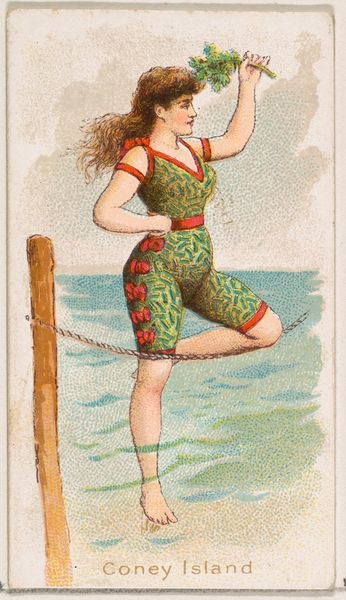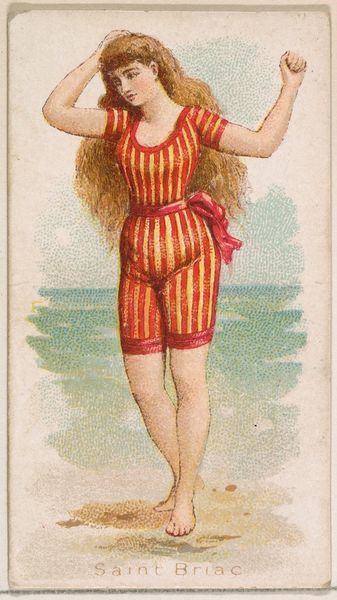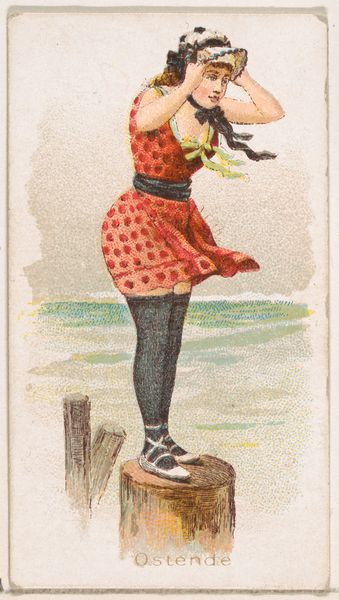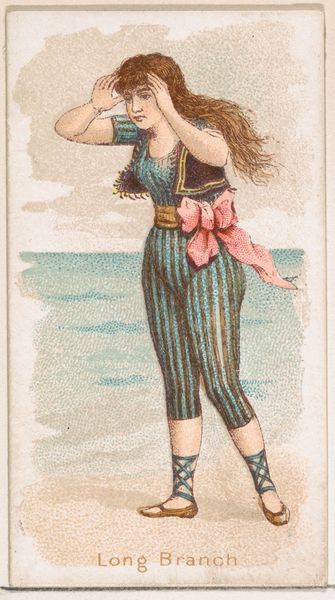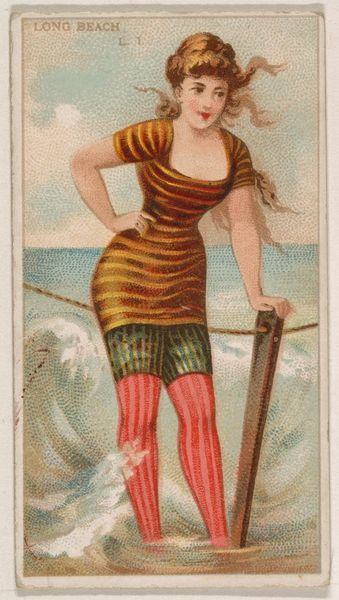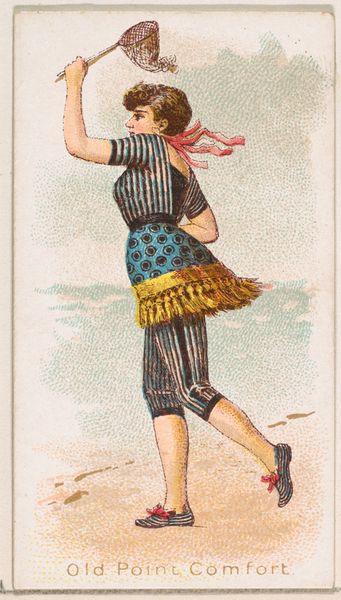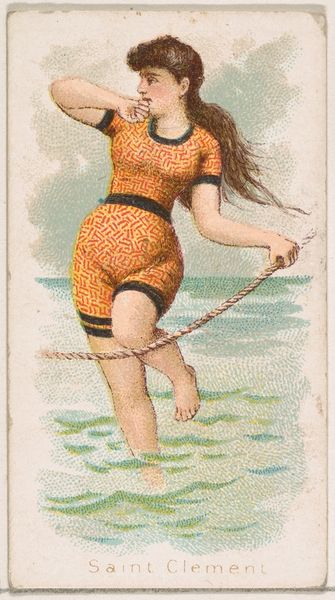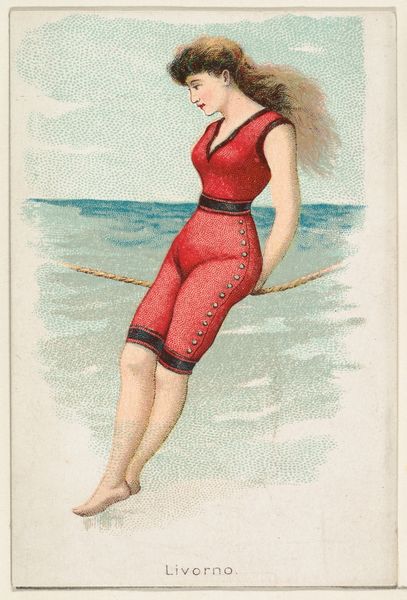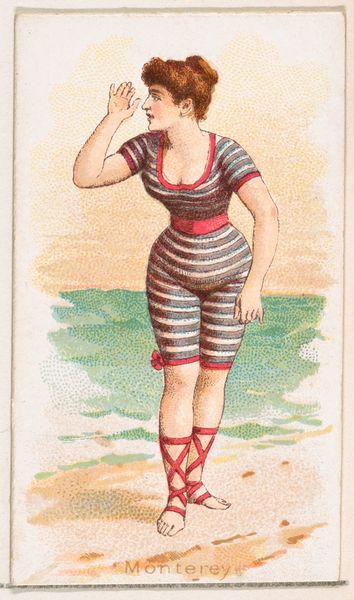
Nahant, from the Fancy Bathers series (N187) issued by Wm. S. Kimball & Co. 1889
0:00
0:00
#
portrait
#
toned paper
# print
#
caricature
#
coloured pencil
#
watercolour illustration
#
watercolor
Dimensions: Sheet: 2 11/16 × 1 1/2 in. (6.9 × 3.8 cm)
Copyright: Public Domain
Editor: So, here we have "Nahant, from the Fancy Bathers series," a print made around 1889 by William S. Kimball & Co. It's watercolor and colored pencil on toned paper, a small image of a woman at the beach adjusting her stocking. It's fascinating how detailed they got with what seems like a commercial product. What catches your eye about it? Curator: What strikes me is the very specific material context of its production. These “fancy bathers” were inserts in cigarette packages. We need to consider this less as fine art, and more as a mass-produced, readily consumable object tied to leisure and, significantly, a newly industrialised economy. Editor: Right, it’s like trading cards today. So the value wasn’t in the artistic skill, but the collectible aspect, its connection to a purchasable product? Curator: Exactly! And consider the materiality of the print itself. The toned paper, the coloured pencils and watercolor – these are not luxury materials, but rather economical choices suited for mass production. Think about the labour involved – how many hands touched this image, from the artist to the factory workers inserting them into cigarette packs? It prompts questions about artistic labor and its commodification in the late 19th century. Editor: It does reframe the image. I was initially thinking about fashion or even Japonisme because of the flatness, but viewing it through the lens of production changes everything. Curator: Precisely. It highlights the intersection of art, industry, and consumption. Consider what the image itself depicts – leisure. Consumption supporting consumption! Editor: Thinking about it this way, I appreciate how the artist or designer worked within the limitations of mass production to create something so appealing. It makes you wonder about all the forgotten artistry embedded in everyday commercial objects. Curator: Indeed. Examining art through its material means of production opens up a dialogue on how art and culture intersect.
Comments
No comments
Be the first to comment and join the conversation on the ultimate creative platform.
